Top Rankings
South Brown County School District ranks among the top 20% of public school district in Kansas for:
Category
Attribute
Diversity
Most diverse schools (Top 1%)
Student Attention
Lowest student:teacher ratio (Top 1%)
For the 2025 school year, there is 1 public preschool serving 229 students in South Brown County School District. This district's average pre testing ranking is 3/10, which is in the bottom 50% of public pre schools in Kansas.
Public Preschool in South Brown County School District have an average math proficiency score of 32% (versus the Kansas public pre school average of 38%), and reading proficiency score of 27% (versus the 40% statewide average).
Minority enrollment is 26% of the student body (majority American Indian and Hispanic), which is less than the Kansas public preschool average of 36% (majority Hispanic).
Overview
This School District
This State (KS)
# Schools
3 Schools
563 Schools
# Students
528 Students
175,366 Students
# Teachers
48 Teachers
12,675 Teachers
Student : Teacher Ratio
11:1
11:1
District Rank
South Brown County School District, which is ranked within the bottom 50% of all 286 school districts in Kansas (based off of combined math and reading proficiency testing data) for the 2021-2022 school year.
The school district's graduation rate of 80-89% has increased from 70-79% over five school years.
Overall District Rank
#250 out of 286 school districts
(Bottom 50%)
(Bottom 50%)
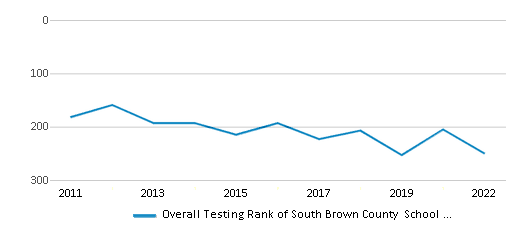
Math Test Scores (% Proficient)
23%
29%
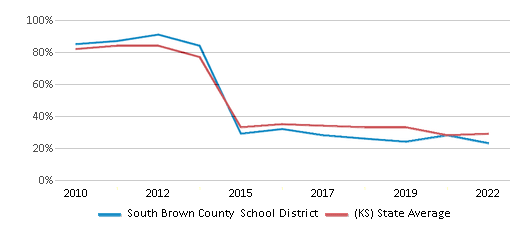
Reading/Language Arts Test Scores (% Proficient)
21%
32%
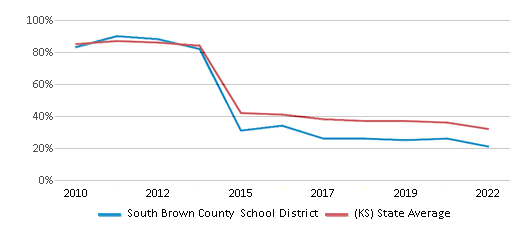
Science Test Scores (% Proficient)
30-34%
31%
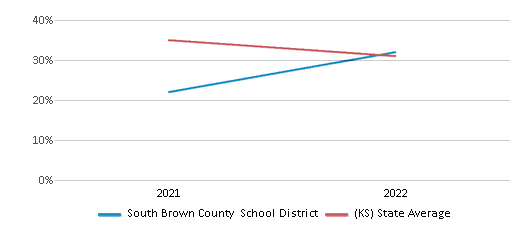
Graduation Rate
80-89%
89%
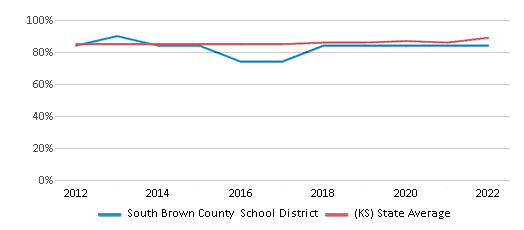
Students by Ethnicity:
Diversity Score
0.48
0.55
# American Indian Students
78 Students
1,258 Students
% American Indian Students
15%
1%
# Asian Students
1 Student
3,742 Students
% Asian Students
n/a
2%
# Hispanic Students
52 Students
35,106 Students
% Hispanic Students
10%
20%
# Black Students
4 Students
10,873 Students
% Black Students
1%
6%
# White Students
372 Students
112,046 Students
% White Students
70%
64%
# Hawaiian Students
n/a
394 Students
% Hawaiian Students
n/a
n/a
# Two or more races Students
21 Students
11,947 Students
% of Two or more races Students
4%
7%
Students by Grade:
# Students in PK Grade:
45
21,709
# Students in K Grade:
43
25,257
# Students in 1st Grade:
31
25,383
# Students in 2nd Grade:
34
25,757
# Students in 3rd Grade:
32
23,472
# Students in 4th Grade:
44
23,284
# Students in 5th Grade:
29
21,197
# Students in 6th Grade:
46
6,799
# Students in 7th Grade:
36
1,086
# Students in 8th Grade:
28
1,161
# Students in 9th Grade:
51
56
# Students in 10th Grade:
35
66
# Students in 11th Grade:
34
65
# Students in 12th Grade:
40
74
# Ungraded Students:
-
-
District Revenue and Spending
The revenue/student of $15,928 in this school district is less than the state median of $16,276. The school district revenue/student has declined by 9% over four school years.
The school district's spending/student of $25,150 is higher than the state median of $17,192. The school district spending/student has declined by 9% over four school years.
Total Revenue
$8 MM
$7,774 MM
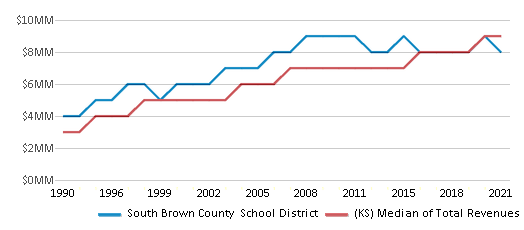
Spending
$13 MM
$8,211 MM
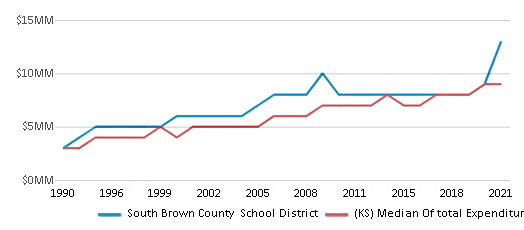
Revenue / Student
$15,928
$16,276
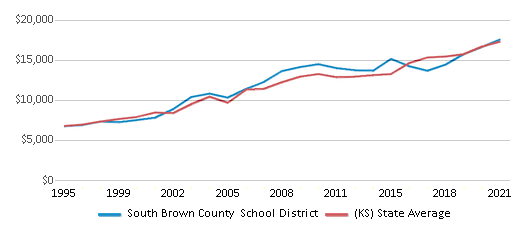
Spending / Student
$25,150
$17,192
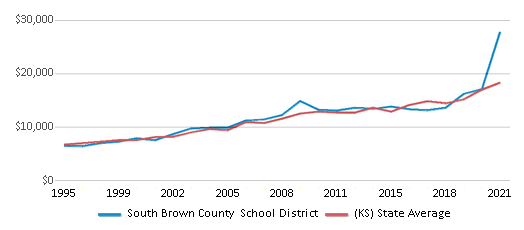
Best South Brown County School District Public Preschools (2025)
School
(Math and Reading Proficiency)
(Math and Reading Proficiency)
Location
Grades
Students
Rank: #11.
Horton Elementary School
(Math: 30-34% | Reading: 25-29%)
Rank:
Rank:
5/
Bottom 50%10
300 E 16th
Horton, KS 66439
(785) 486-2616
Horton, KS 66439
(785) 486-2616
Grades: PK-4
| 229 students
Recent Articles

Year-Round Or Traditional Schedule?
Which is more appropriate for your child? A year-round attendance schedule or traditional schedule? We look at the pros and cons.

Why You Should Encourage Your Child to Join a Sports Team
Participating in team sports has a great many benefits for children, there is no doubt. In this article you will learn what those benefits are.

White Students are Now the Minority in U.S. Public Schools
Increasing birth rates among immigrant families from Asia and Central and South America, combined with lower birth rates among white families, means that for the first time in history, public school students in the United States are majority-minority. This shift in demographics poses difficulties for schools as they work to accommodate children of varying language abilities and socio-economic backgrounds.





